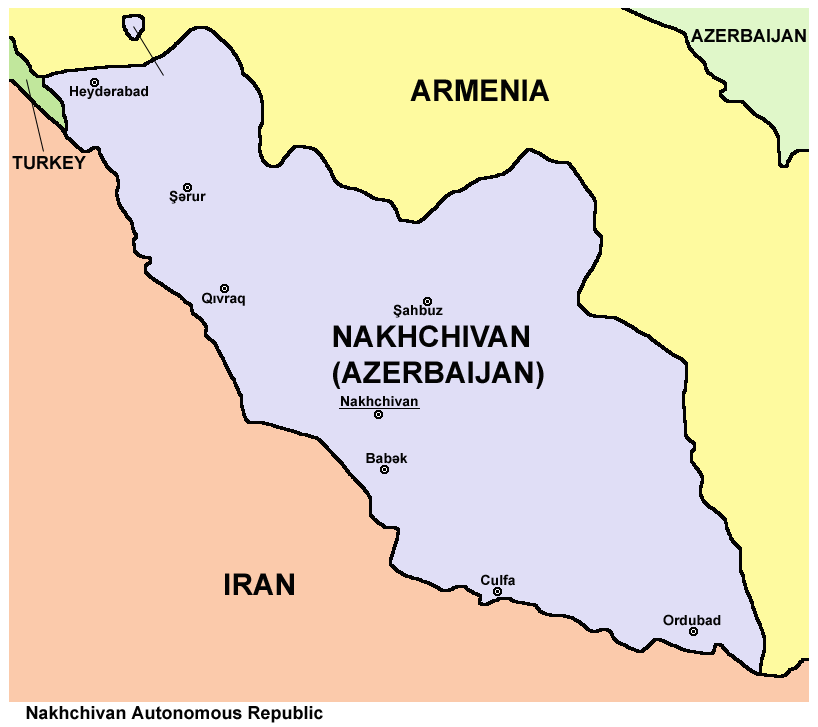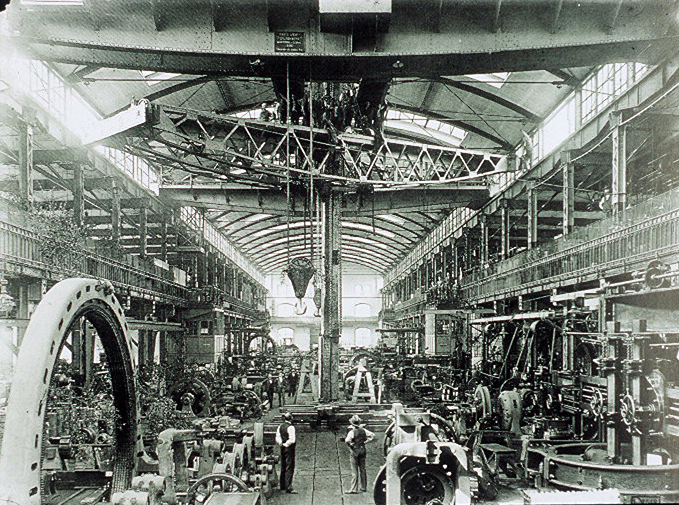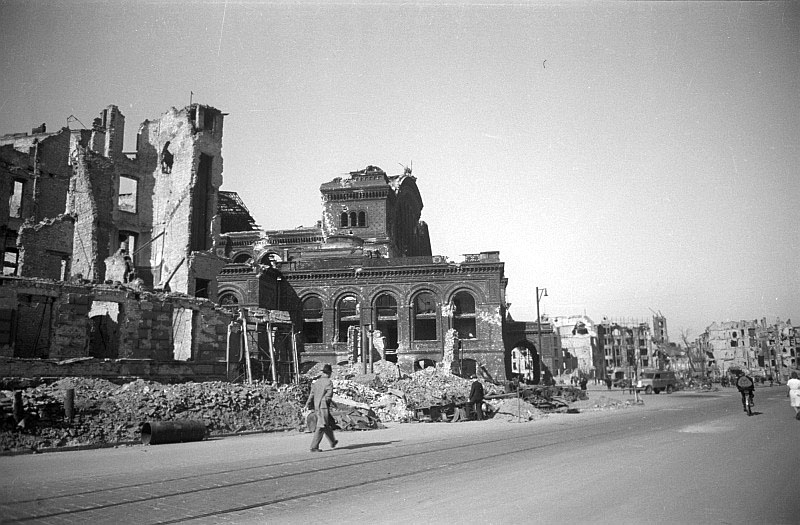|
Mitte (locality)
Mitte (; German for "middle" or "center") is a central section () of Berlin, Germany, in the eponymous borough () of Mitte. Until 2001, it was itself an autonomous district. Mitte proper comprises the historic center of Old Berlin, with the medieval churches of St. Nicholas and St. Mary, the Museum Island, city buildings (Rotes Rathaus and Altes Stadthaus), the Fernsehturm, and the Brandenburg Gate, along the central boulevard of Unter den Linden. For these reasons, Mitte is considered the "heart" of Berlin. History Mitte comprises the historic center of Berlin ( and ). Its history thus corresponds to the history of the entire city until the early 20th century, and with the Greater Berlin Act in 1920 it became the first district of the city. It was among the areas of the city most heavily damaged in World War II. Following a territorial redeployment by the Soviet Union and the United Kingdom that reshaped the borders of West Berlin's British Sector in August 1945, the ... [...More Info...] [...Related Items...] OR: [Wikipedia] [Google] [Baidu] [Amazon] |
Exclave
An enclave is a territory that is entirely surrounded by the territory of only one other state or entity. An enclave can be an independent territory or part of a larger one. Enclaves may also exist within territorial waters. ''Enclave'' is sometimes used improperly to denote a territory that is only partly surrounded by another state. Enclaves that are not part of a larger territory are not exclaves, for example Lesotho (enclaved by South Africa), and San Marino and Vatican City (both enclaved by Italy) are enclaved sovereign states. An exclave is a portion of a state or district geographically separated from the main part, by some surrounding alien territory. Many exclaves are also enclaves, but an exclave surrounded by the territory of more than one state is not an enclave. The Azerbaijani exclave of Nakhchivan is an example of an exclave that is not an enclave, as it borders Armenia, Iran, and Turkey. Semi-enclaves and semi-exclaves are areas that, except for possessing ... [...More Info...] [...Related Items...] OR: [Wikipedia] [Google] [Baidu] [Amazon] |
Friedrichshain
Friedrichshain () is a quarter (''Ortsteil'') of the borough of Friedrichshain-Kreuzberg in Berlin, Germany. From its creation in 1920 until 2001, it was a freestanding Boroughs of Berlin, city borough. Formerly part of East Berlin, it is adjacent to Mitte, Prenzlauer Berg, Kreuzberg and Lichtenberg, Berlin, Lichtenberg. Friedrichshain is named after the ''Volkspark Friedrichshain'', a vast green park at the northern border with Prenzlauer Berg. In the Nazism, Nazi era, the borough was called ''Horst Wessel, Horst-Wessel-Stadt''. Friedrichshain is one of the trendy districts of Berlin and has experienced gentrification. Geography Friedrichshain is defined by the following roads and places, starting clock-wise in the west: Lichtenberger Straße, Mollstraße, Otto-Braun-Straße, Am Friedrichshain, Virchowstraße, Margarete-Sommer-Straße, Danziger Straße, Landsberger Allee, Hausburgstraße, Thaerstraße, Eldenaer Straße, S-Bahn-Trasse, Kynaststraße, Stralauer Halbinsel, Spree. ... [...More Info...] [...Related Items...] OR: [Wikipedia] [Google] [Baidu] [Amazon] |
Pankow
Pankow () is the second largest and most populous Boroughs and quarters of Berlin, borough of the German capital Berlin. In Berlin's 2001 administrative reform, it was merged with the former boroughs of Prenzlauer Berg and Weissensee (Berlin), Weißensee; the resulting borough retained the name Pankow. Pankow was sometimes claimed by the Western Allies (United States, United Kingdom, and France) to be the capital of the German Democratic Republic (East Germany), while the German Democratic Republic itself considered East Berlin to be its capital. Overview The borough, named after the Panke river, covers the northeast of the city region, including the inner city locality of Prenzlauer Berg. It borders Mitte and Reinickendorf in the west, Friedrichshain-Kreuzberg in the south, and Lichtenberg, Berlin, Lichtenberg in the east. Pankow is Berlin's largest borough by population and the second largest by area (after Treptow-Köpenick). Between 1945 and 1960, Schönhausen Palace and the ... [...More Info...] [...Related Items...] OR: [Wikipedia] [Google] [Baidu] [Amazon] |
Prenzlauer Berg
Prenzlauer Berg () is a Boroughs and localities of Berlin, locality of Berlin, forming the southerly and most urban district of the borough of Pankow. From its founding in 1920 until 2001, Prenzlauer Berg was a district of Berlin in its own right. However, that year it was incorporated (along with the borough of Berlin-Weißensee, Weißensee) into the greater district of Pankow. From the 1960s onward, Prenzlauer Berg was associated with proponents of East Germany's diverse counterculture including Christian activists, Bohemianism, bohemians, state-independent artists, and the gay community. It was an important site for the peaceful revolution that brought down the Berlin Wall in 1989. In the 1990s the borough was also home to a vibrant squatting scene. It has since experienced rapid gentrification. Geography Prenzlauer Berg is a portion of the Pankow district in northeast Berlin. To the west and southwest it borders Mitte, to the South Friedrichshain-Kreuzberg, to the east Lich ... [...More Info...] [...Related Items...] OR: [Wikipedia] [Google] [Baidu] [Amazon] |
Gesundbrunnen (Berlin)
Gesundbrunnen (, literally "health springs"; colloquially ''Plumpe'', "pump") is a locality (''Ortsteil'') of Berlin in the borough (''Bezirk'') of Mitte. It was created as a separate entity during the 2001 administrative reform, formerly the eastern half of the former Wedding district (merged into Mitte) and locality. Gesundbrunnen has the highest percentage of non-German residents of any Berlin locality, at 35.1% as of the end of 2008. In-Berlin-Brandenburg.comWie viele Ausländer gibt es in Berlin?Retrieved 2009-10-27. Geography The locality is situated in Berlin's inner city, at the north-eastern rim of the central Mitte borough. Bernauer Straße separates it from the locality of Mitte in the south and Reinickendorfer Straße from Wedding in the west. In the north Gesundbrunnen borders with Reinickendorf (in the Reinickendorf borough) while in the east the Mauerpark and the Nordbahn railway line forms the border with Prenzlauer Berg and Pankow, both localities of the Pankow ... [...More Info...] [...Related Items...] OR: [Wikipedia] [Google] [Baidu] [Amazon] |
Wedding (Berlin)
Wedding (, ) is a locality in the borough of Mitte, Berlin, Germany. It was a separate borough in the north-western inner city until it was fused with Tiergarten and Mitte in Berlin's 2001 administrative reform. At the same time the eastern half of the former borough of Wedding—on the other side of Reinickendorfer Straße—was separated as the new locality of Gesundbrunnen. History In the 12th century, the manor of the nobleman Rudolf de Weddinge was located on the small Panke River in the immediate vicinity of today's Nettelbeckplatz. The farmstead, which burned down more than once, remained abandoned in the forest until the 18th century. In the mid-18th century, while Gesundbrunnen was being built up as a health resort and spa town, gambling and prostitution moved into Wedding, transforming it into a pleasure district. In 1864, Ernst Christian Friedrich Schering established the Schering pharmaceutical company on Müllerstraße; the company has been a part of Bayer sinc ... [...More Info...] [...Related Items...] OR: [Wikipedia] [Google] [Baidu] [Amazon] |
Moabit
Moabit () is an inner city locality in the boroughs of Berlin, borough of Mitte, Berlin, Germany. As of 2022, about 84,000 people lived in Moabit. First inhabited in 1685 and incorporated into Berlin in 1861, the former industrial sector, industrial and working-class neighbourhood is fully surrounded by three watercourses, which define its present-day border. Between 1945 and 1990, Moabit was part of the British sector of West Berlin and directly bordered East Berlin. Until the administrative reform in 2001, Moabit was a part of the district of Tiergarten (Berlin), Tiergarten. Colloquially, the name ''Moabit'' also refers to the Moabit Criminal Court, Central Criminal Court (''Strafgericht'') and Detention (imprisonment), detention centre, which deals with all criminal cases in Berlin and is based in Moabit. Name The origin of the name ''Moabit'' is disputed. According to one account, it can be traced back to the Huguenots, in the time of King in Prussia, King Frederick Willia ... [...More Info...] [...Related Items...] OR: [Wikipedia] [Google] [Baidu] [Amazon] |
Tiergarten, Berlin
Tiergarten (, literally ''Animal Garden'', historically meaning ''deer park'' or hunting ''game park'') is a locality within the Boroughs of Berlin, borough of Mitte, in central Berlin (Germany). Notable for the great and Großer Tiergarten, homonymous urban park, before German reunification, it was a part of West Berlin. Until Berlin's 2001 administrative reform, Tiergarten was also the name of a borough (Bezirk), consisting of the current locality (''Ortsteil'') of Tiergarten (formerly called ''Tiergarten-Süd'') plus Hansaviertel and Moabit. A new system of road and rail tunnels runs under the park towards Berlin Hauptbahnhof, Berlin's main station in nearby Moabit. History Historical notes Once a hunting ground of the Prince-Elector, Electors of Rulers of Brandenburg, Brandenburg the ''Großer Tiergarten'' park of today was designed in the 1830s by landscape architect Peter Joseph Lenné. In the course of industrialization in the 19th century, a network of streets was laid ... [...More Info...] [...Related Items...] OR: [Wikipedia] [Google] [Baidu] [Amazon] |
Spree (river)
The Spree ( , ; , , ; ; ; in Lower Sorbian also called ''Rěka'') is a river in Germany and the Czech Republic. With a length of approximately , it is the main tributary of the Havel River. The Spree is much longer than the Havel, which it flows into at Berlin-Spandau; the Havel then flows into the Elbe at Havelberg. The river rises in the Lusatian Highlands, in the Lusatian part of Saxony, where it has three sources: the historical one called ''Spreeborn'' in the village of , the water-richest one in Neugersdorf, and the highest elevated one in Eibau. The Spree then flows northwards through Upper and Lower Lusatia, where it crosses the border between Saxony and Brandenburg. After passing through Cottbus, it forms the Spree Forest (), a large inland delta and biosphere reserve. It then flows through Lake Schwielochsee before entering Berlin, as The Spree is the main river of Berlin, Brandenburg, Lusatia, and the settlement area of the Sorbs, who call the river ''Sprj ... [...More Info...] [...Related Items...] OR: [Wikipedia] [Google] [Baidu] [Amazon] |
Kreuzberg
Kreuzberg () is a district of Berlin, Germany. It is part of the Friedrichshain-Kreuzberg borough located south of Berlin-Mitte, Mitte. During the Cold War era, it was one of the poorest areas of West Berlin, but since German reunification in 1990, it has undergone significant gentrification and is now known for its vibrant arts scene. The borough is known for its large percentage of immigrants and descendants of immigrants, many of whom are of Turks in Germany, Turkish ancestry. This influx began in the 1960s and 1970s when West Germany invited 'Gastarbeiter' (guest workers) from various countries, including Turkey, Italy, Greece, and Yugoslavia, to address labour shortages and aid in Reconstruction of Germany, post-war reconstruction. As of 2006, 31.6% of Kreuzberg's inhabitants did not have German citizenship. Kreuzberg is known for its diverse cultural life and experimental alternative lifestyles, making it an attractive area for many. However, some parts of the district ar ... [...More Info...] [...Related Items...] OR: [Wikipedia] [Google] [Baidu] [Amazon] |
Checkpoint Charlie
Checkpoint Charlie (or "Checkpoint C") was the Western Bloc, Western Bloc's name for the best-known Berlin Wall crossing point between East Berlin and West Berlin during the Cold War (1947–1991), becoming a symbol of the Cold War, representing the separation of East and West. East German leader Walter Ulbricht agitated and maneuvered to get the Soviet Union's permission to construct the Berlin Wall in 1961 to prevent Human capital flight, brain drain, Emigration from the Eastern Bloc, emigration and defection from East Berlin and the wider East Germany, German Democratic Republic into West Berlin. Soviet and American tanks briefly faced each other at the location during the Berlin Crisis of 1961. On 26 June 1963, U.S. President John F. Kennedy visited Checkpoint Charlie and looked from a platform onto the Berlin Wall and into East Berlin, the same day he gave his famous Ich bin ein Berliner speech. After the dissolution of the Eastern Bloc and the German reunification, reun ... [...More Info...] [...Related Items...] OR: [Wikipedia] [Google] [Baidu] [Amazon] |







